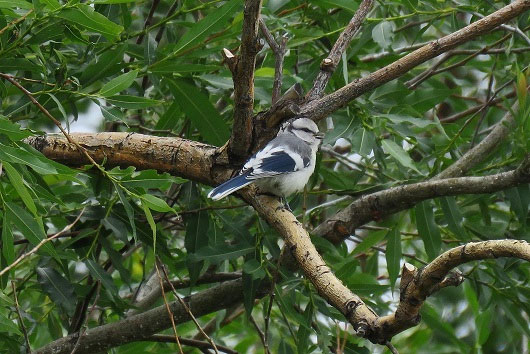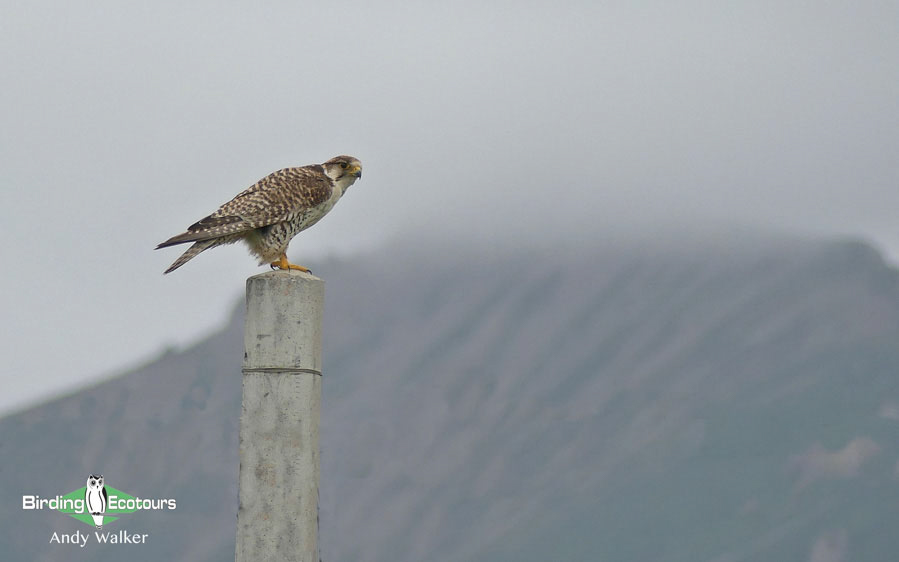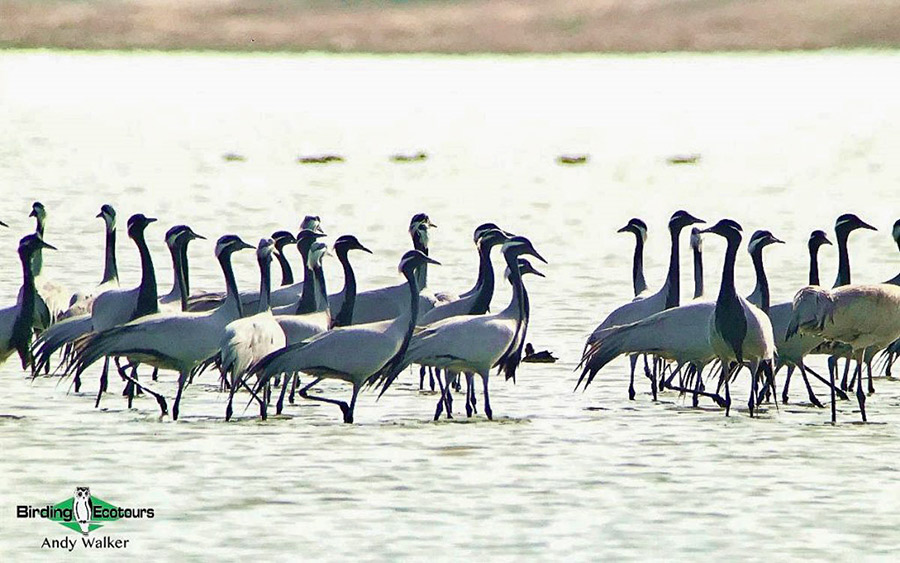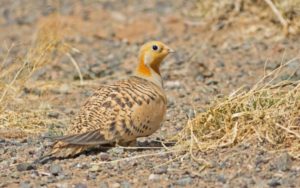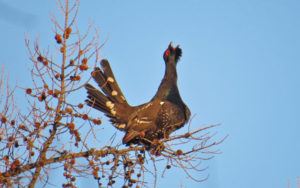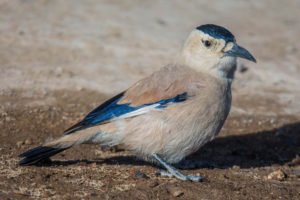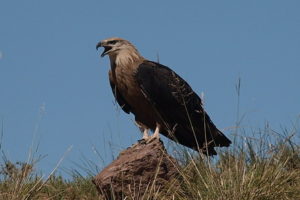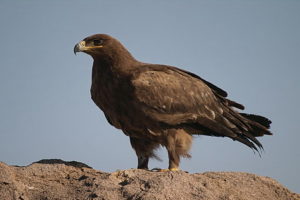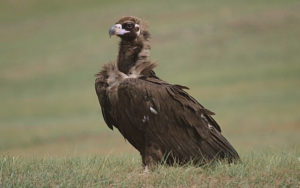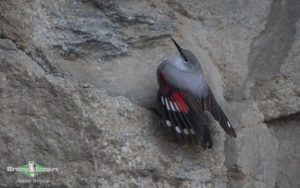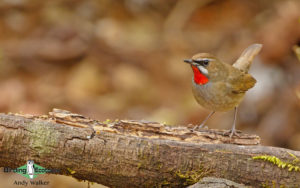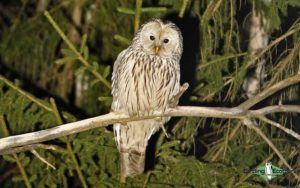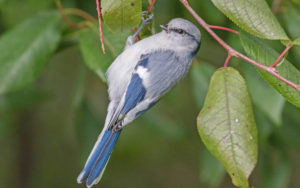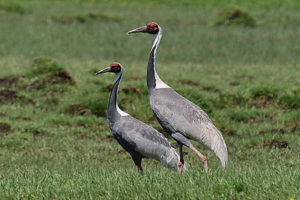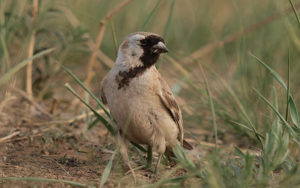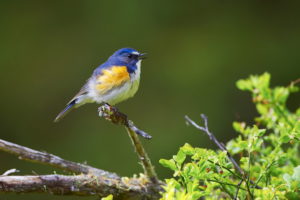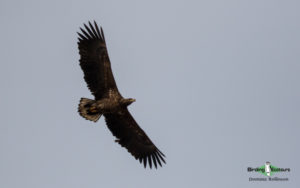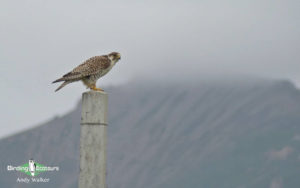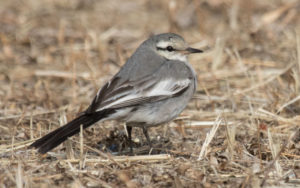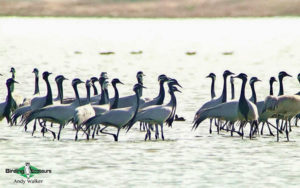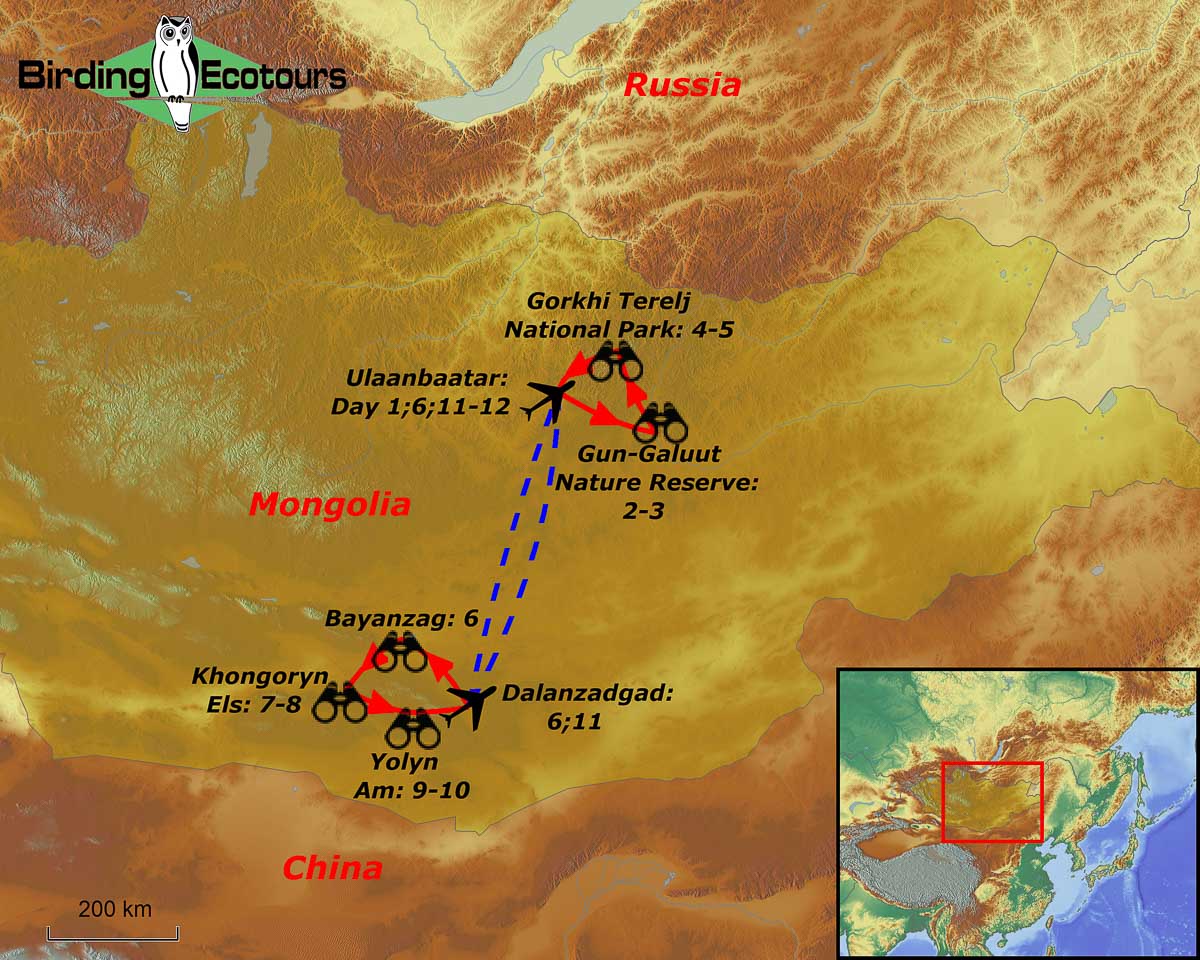Birding Tour Mongolia: Steppes and Gobi Desert Birding
Go to: Mongolia Birding Tours | Birding Tours in Asia | All our birding tours
Birding Tour Mongolia: Steppes and Gobi Desert Birding
May 2026
Mongolia is one of the most exciting and remote birding destinations in Asia and this small-group tour (without real camping like some operators) will allow you to see a wide variety of birds in spectacular natural landscapes. We will traverse the country, visiting the Siberian taiga forests, the vast seamless steppe grasslands, a range of fresh and brackish lakes, the Gobi Desert and impressive mountains. We will stay in local-style comfortable yurts (here called gers), offering an incredible and authentic Mongolian experience.
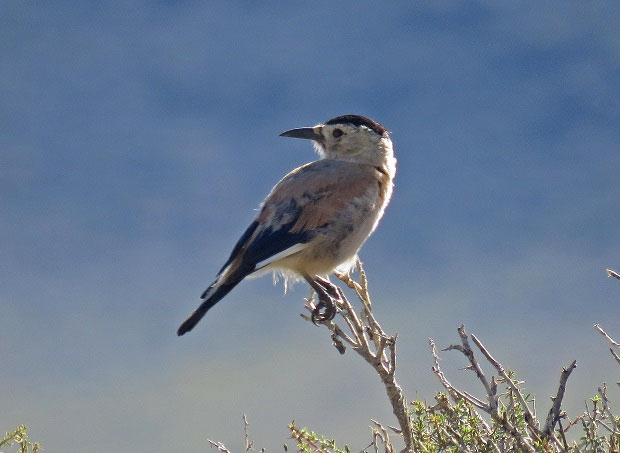
The country has been made famous worldwide by Genghis Khan (Chinggis Khaan) and the Mongol hordes but the draw of some highly sought and poorly known bird species has also kept birders and wildlife enthusiasts enthralled. This is also one of the best destinations for Snow Leopard and other mammals, please see here for big cat and other Mongolia tours we may offer from time to time or contact us for a custom tour.
This Mongolian birdwatching tour offers the ultimate adventure to find an array of dream birds from the Eastern Palearctic. We will start (and end) our Mongolian birding adventure in Ulaanbaatar (also widely known as Ulan Bator). We will visit several different areas and key habitats in the region where we will look for a range of important target species. On arrival in the city some of our target birds should be waiting for us near our hotel, such as Azure Tit, Azure-winged Magpie, Amur Falcon and Long-tailed Rosefinch.
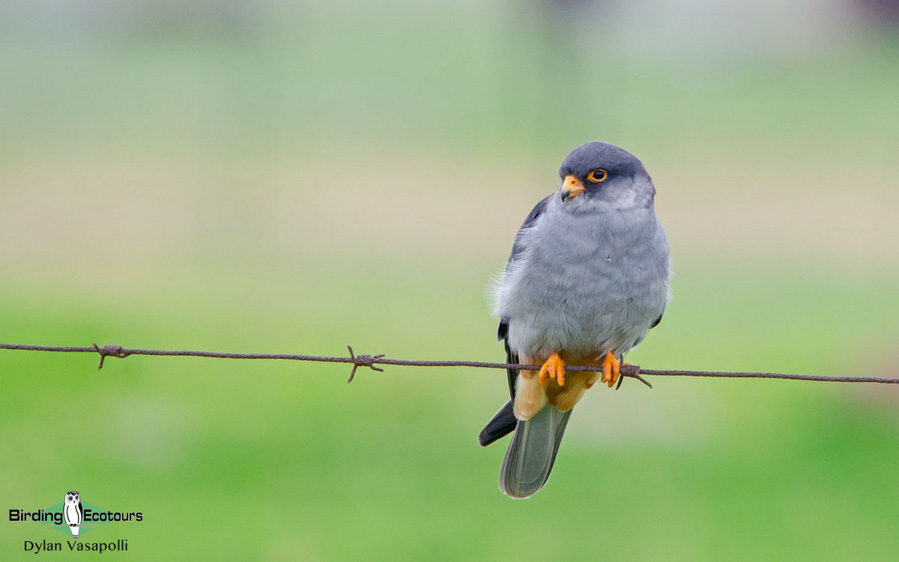
We will then travel to Gun Galuut Nature Reserve in the steppe grassland habitats. In this park, we will search for Saker Falcon, Steppe Eagle, Greater Spotted Eagle, Golden Eagle, Bearded Vulture (Lammergeier), Cinereous Vulture, Pere David’s Snowfinch, Meadow Bunting and Pied Wheatear to name a few possibilities. We might also find White-naped Crane, Demoiselle Crane, Black Stork, Swan Goose, Bar-headed Goose, Stejneger’s Scoter, Asian Dowitcher, Pallas’s Reed Bunting, Lanceolated Warbler, Citrine Wagtail, and Red-throated Thrush. With luck we may even encounter the Critically Endangered (BirdLife International) Siberian Crane.
Our next stop on the tour will take us to some incredible Siberian taiga forest where we will look for Black-billed Capercaillie, Hazel Grouse, Ural Owl, Siberian Rubythroat, Red-flanked Bluetail, Chinese Bush Warbler, Black Woodpecker, White-backed Woodpecker, Spotted Nutcracker, and many more high-latitude forest birds along the way.
After the forests of the taiga we will do something totally different, birding the famed Gobi Desert! Here, yet more targets await us, with mouthwatering prospects of breeding-plumaged Oriental Plover and Greater Sand Plover, along with Pallas’s Sandgrouse, Henderson’s (Mongolian) Ground Jay, Desert Wheatear, Asian Desert Warbler, and Saxaul Sparrow to name a few.
The final stop of the tour (before returning to Ulaanbaatar) will be in the high mountains where we will look for Mongolia’s sole endemic, Kozlov’s Accentor, the monotypic Wallcreeper, and the secretive Altai Snowcock. Other specials here include Himalayan Beautiful Rosefinch, Mongolian Finch, and White-winged Snowfinch.
In addition to these exciting birds we might also see an assortment of interesting mammals such as Grey Wolf, Mongolian Gazelle, Siberian Ibex, and Argali (mountain sheep).
Itinerary (12 days/11 nights)
Day 1. Arrival in Ulaanbaatar
You will be met at the Chinggis Khaan International Airport after your morning arrival in Ulaanbaatar, the capital of Mongolia, and you will be transferred to your hotel nestled on the banks of the Tuul River. If you cannot arrive this morning or would like to arrive early to acclimatize or explore the city, we can arrange extra accommodation for you.
We will have a welcome lunch together and then we will go to some woodland near the river in the afternoon where we will look for Azure Tit, Azure-winged Magpie, Amur Falcon, White-crowned Penduline Tit, Hawfinch, Long-tailed Rosefinch, Red-throated Thrush, and perhaps some waterfowl in the nearby gravel pit ponds.
Overnight: Ulaanbaatar
Azure Tit (photo by John Geeson)
Saker Falcon is a huge falcon and makes its home in the steppes and mountains of Mongolia.
Days 2 – 3. Gun-Galuut Nature Reserve
We will spend time birding in the picturesque Gun-Galuut Nature Reserve. The reserve was founded in 2003 to protect the endangered wildlife and their habitat along the River Kherlen. The reserve is made up of high mountains and pretty lakes teeming with birds and surrounded by grassland full of beautiful and colorful flowers, all providing important breeding and foraging grounds for many of our target species.
There are several birds of global significance in this area and we will spend time trying to find as many of them as possible. Potential highlights include Siberian Crane (Critically Endangered, BirdLife International), White-naped Crane, Demoiselle Crane, Common Crane, Black Stork, Swan Goose, Bar-headed Goose, Whooper Swan, Stejneger’s Scoter, Eastern Spot-billed Duck, Asian Dowitcher, White-winged Tern, Common Tern (the longipennis subspecies), Vega Gull, White-tailed Eagle, Eastern Marsh Harrier, Amur Falcon, Saker Falcon, Pere David’s Snowfinch, Meadow Bunting, Pallas’s Reed Bunting, Lanceolated Warbler, Paddyfield Warbler, Oriental Reed Warbler, Northern Wheatear, Pied Wheatear, Isabelline Wheatear, Citrine Wagtail, and Red-throated Thrush.
Interesting raptors we might encounter, include Saker Falcon, Upland Buzzard, Golden Eagle, Steppe Eagle, Bearded Vulture (Lammergeier), and Cinereous Vulture. Some of the further passerines possible in the area are Rock Sparrow, Red-billed Chough, Pere David’s Snowfinch, Richard’s Pipit, Asian Short-toed Lark, Mongolian Short-toed Lark and Common Rock Thrush.
Overnight: Steppe Nomads ger camp
Large flocks of Demoiselle Crane may be seen on this tour.
Days 4 – 5. Gorkhi Terelj National Park
We will drive to Gorkhi Terelj National Park and check into a tourist ger camp near the birding site for a two-night stay to explore this fascinating area. Here we will look for forest and forest/steppe birds, including the tough and highly sought Black-billed Capercaillie and Chinese Bush Warbler, along with plenty of other quality birds like Siberian Rubythroat, Daurian Partridge, Ural Owl, Oriental Cuckoo, Eurasian Three-toed Woodpecker, Red-flanked Bluetail, Daurian Redstart, Dark-sided Flycatcher, Taiga Flycatcher, Black-faced Bunting, Stejneger’s Stonechat, and White-cheeked Starling.
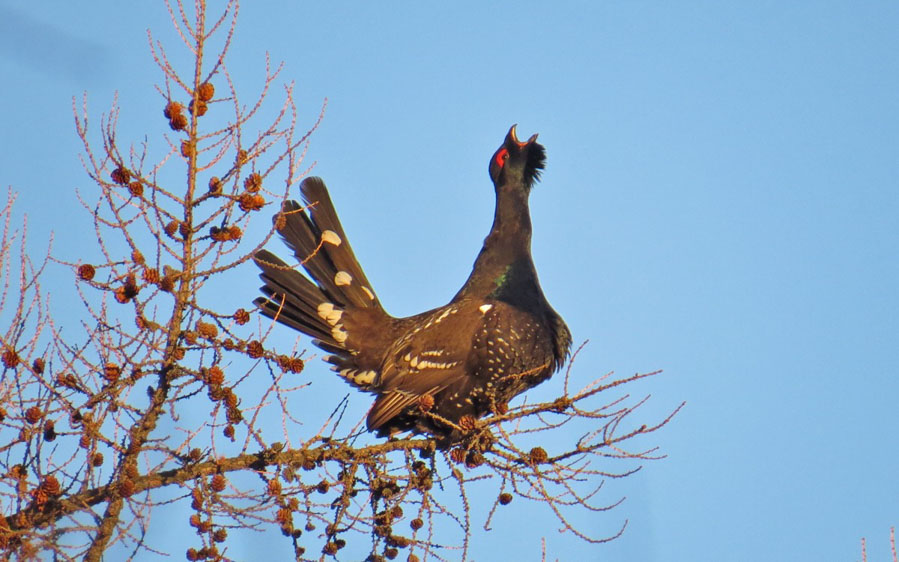
Birders who have spent time in the non-breeding season in Thailand (e.g. on our Northern Thailand – Spectacular Resident and Migrant Birds birding tour) or chased rare birds in the UK or continental Europe will be familiar with the challenge of Phylloscopus warbler identification. In Gorkhi Terelj you have the opportunity of seeing breeding and singing Arctic Warbler, Greenish Warbler, Two-barred Warbler, Yellow-browed Warbler, Hume’s Leaf Warbler, Pallas’s Leaf Warbler, and Dusky Warbler which makes identification less of a challenge!
Other birds we will look for in the Siberian boreal forest (taiga) include Northern Goshawk, Eurasian Sparrowhawk, Eurasian Hoopoe, Black Woodpecker, Grey-headed Woodpecker, White-backed Woodpecker, Spotted Nutcracker, Ortolan Bunting, Pine Bunting, Paddyfield Warbler, Oriental Reed Warbler, Lesser Whitethroat, Willow Tit, and Common Redstart.
Overnight: Tourist ger camp
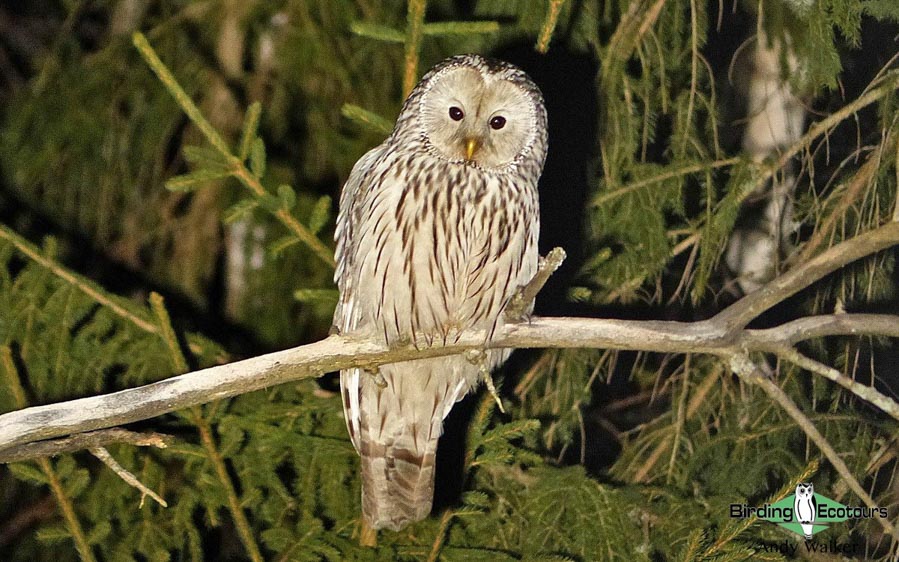
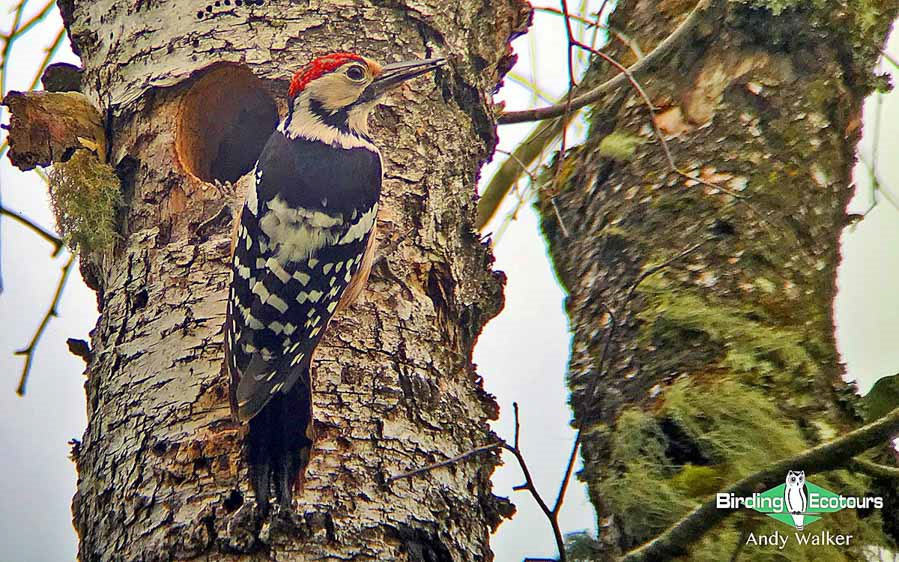
Day 6. Bayanzag
Today we will take a flight to Dalanzadgad and then drive to the Bayanzag or ‘Flaming Cliffs’, famed for the world’s first discovery of dinosaur eggs in the 20th century. This site is also great for a few prized birds like Pallas’s Sandgrouse, Oriental Plover, Long-legged Buzzard, Great (Steppe) Grey Shrike, Horned Lark, Isabelline Wheatear, and Desert Wheatear. There are several mammals possible in the area too such as Goitered Gazelle, Gobi Jerboa, Great Gerbil, and with luck maybe even some dinosaur bones!
Overnight: Tourist ger camp
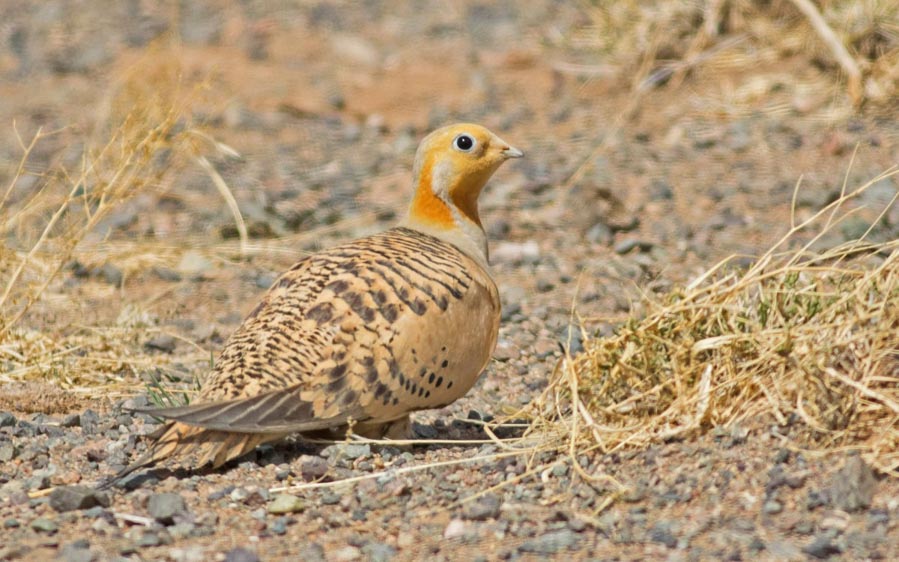
Days 7 – 8. Khongoryn Els
We have a long drive today as we travel to the ‘Singing Sands’, the famous dunes of Khongoryn Els, located within the Gobi Gurvansaikhan National Park (i.e. the Gobi Desert!). We will make stops along the way for any interesting birds and for the incredible sandstone hills scenery along the way. Once we arrive at our ger camp, we will be able to relax and unwind with spectacular views of endless desert steppe with massive sand dunes set against the grandeur of the high mountains. We will have to pull ourselves away from these views to find the many Gobi Desert specialties such as Henderson’s Ground Jay, Saxaul Sparrow, Hill Pigeon, Pallas’s Sandgrouse, Lesser Kestrel, Long-legged Buzzard, Great (Steppe) Grey Shrike, Desert Wheatear, and Asian Desert Warbler.
Overnight: Tourist ger camp
Days 9 – 10. Yolyn Am
We will drive through yet more beautiful scenery as we head to Yolyn Am, a deep and narrow gorge in the Gurvan Saikhan Mountains in the Gurvan Saikhan National Park. We hope to see Bearded Vulture (Lammergeier) and Himalayan Vulture at close range, along with Kozlov’s Accentor, Sulphur-bellied Warbler, Himalayan Beautiful Rosefinch, and the monotypic Wallcreeper.
Other species we will look for over these two days will include Chukar Partridge, Cinereous Vulture, Golden Eagle, Eurasian Eagle-Owl, Saker Falcon, Barred Warbler, Brown Accentor, Güldenstädt’s Redstart, Eversmann’s Redstart, Asian Rosy Finch, Brandt’s Mountain Finch, White-winged Snowfinch, Mongolian Finch, Godlewski’s Bunting, Grey-necked Bunting, Eurasian Crag Martin, and Common Rock Thrush. We will also search for Altai Snowcock, which is one of the more challenging species for the trip. Siberian Ibex can be found in the mountains here too.
Overnight: Tourist ger camp
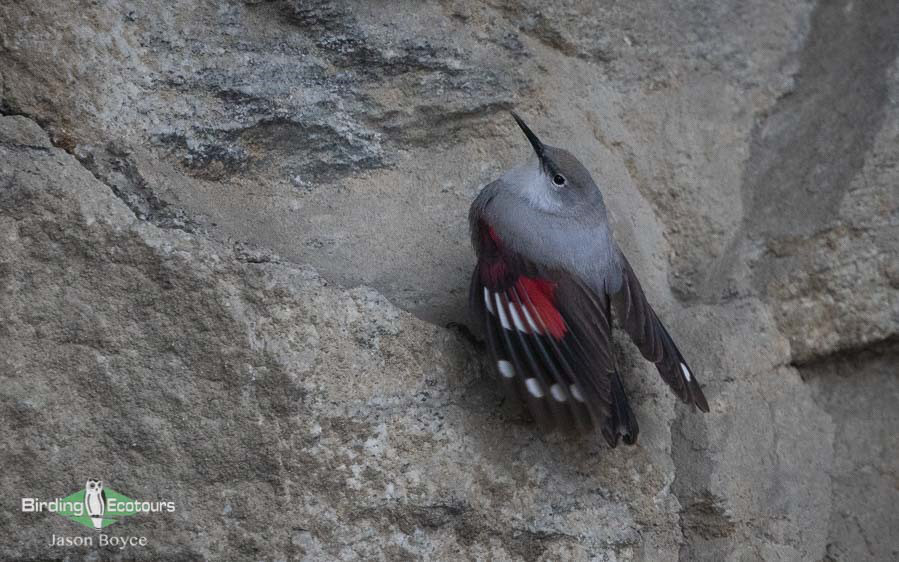
Day 11. Travel to Ulaanbaatar
This is essentially a travel day as we will take a flight back to Ulaanbaatar from Dalanzadgad. Depending on the time of the flights there may be time for some additional birding near Dalanzadgad or Ulaanbaatar.
Overnight: Ulaanbaatar
Day 12. Departure from Ulaanbaatar
This is a non-birding day with your departure home from Ulaanbaatar. Depending on your flight schedule you may have time to explore the city. If you would like to extend your stay in Mongolia we can easily arrange for this.
Overnight: Not included
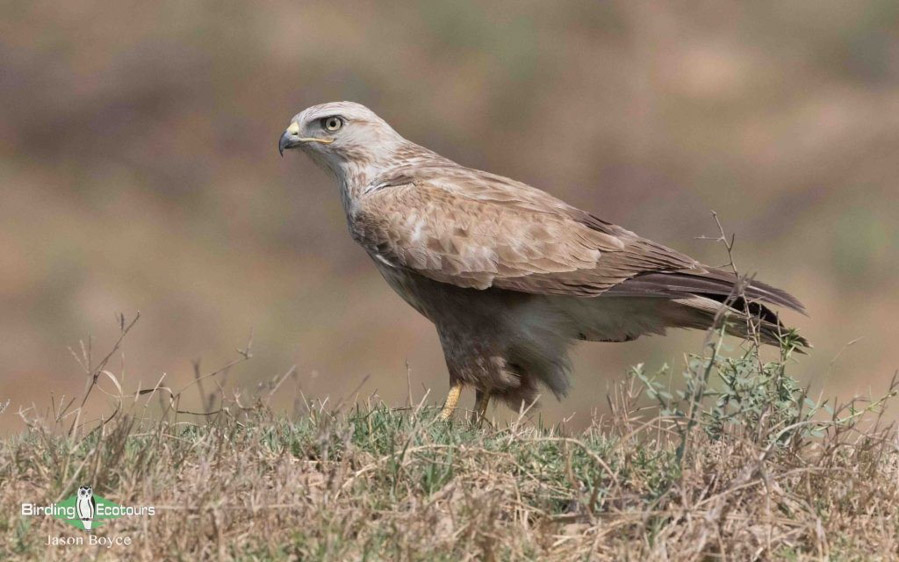
Please note that the itinerary cannot be guaranteed as it is only a rough guide and can be changed (usually slightly) due to factors such as availability of accommodation, updated information on the state of accommodation, roads or birding sites, and the discretion of the guides and other factors.
Download Itinerary
Accommodation note:
We will spend two nights in hotels (in Ulaanbaatar at the beginning and end of the tour) but the majority (11 nights) of the tour accommodation will be spent in tourist ger camps with all equipment provided (gers are the local name for yurts). Our selected ger camps are the highest of local standards. The camps provide gers for accommodation; each ger usually has 2-4 beds, a stove, chairs, a table, and drawers inside. Due to the remoteness, bathrooms are shared, and electricity is provided at limited hours, usually between 7-10 pm. We will mostly stay in comfortable and clean ger camps on shared basis. But we will try to book the gers closest to the bathrooms. Please note that en suite ger camps are limited in Mongolia, please advise us on booking if you require a ger all to yourselves and we will try and book this where possible. The meals are served in a restaurant, usually an immense ger or a one-story building. We do not stay in small, portable tents (such as those you might use when you go camping at home) like some operators in Mongolia put you in. We believe you can see the birds and amazing country yet still remain comfortable at the same time.
